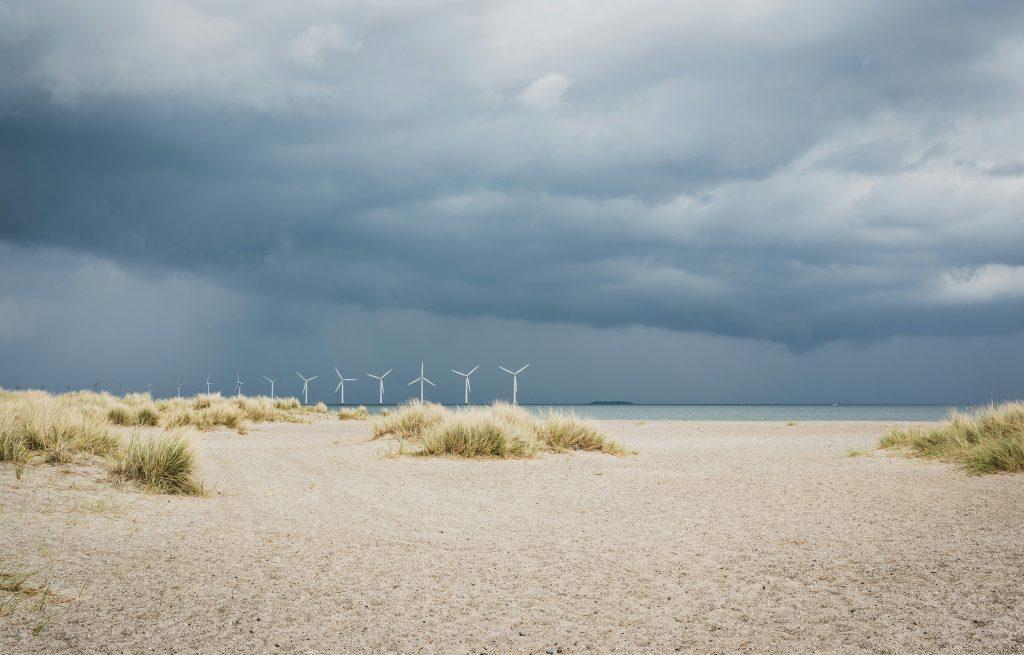The new Climate Partnership Agreement certifies that the 11 district heating plants in Ringkøbing-Skjern Municipality will need to convert to 100 per cent renewable energy by the end of 2030.
The municipality has ambitious targets for the reduction of our CO2 emissions, and through the Climate Partnership Agreement here, the district heating plants, and the municipality will work together to achieve the targets, e.g. through increased sector coupling, where more power from wind turbines will be channelled into the heating plants. I believe that together we can reach a few steps higher up the ladder than we could individually, says Søren Elbæk (S), deputy mayor and chairman of the municipality’s business, climate and labour committee.
Earlier this week, the deputy mayor, chairmen and operators of the 11 district heating plants in Ringkøbing-Skjern Municipality signed the agreement, which was approved by the city council in January.
The district heating plants in the following towns in Ringkøbing-Skjern Municipality are part of the Climate Partnership Agreement with the municipality:
- Tarm
- Hemmet
- Lem
- Spjald
- Skjern
- Troldhede
- Hvide Sande
- Tim
- Ringkøbing
- Ørnhøj-Grønbjerg
- Videbæk

Exemption Clause
In conjunction with the signing ceremony, the district heating professionals from the district heating plants discussed the barriers and opportunities for reaching 100 per cent renewable energy in the district heating plants by the end of 2030.
“It won’t be easy to reach 100 per cent,” admits Jan Grarup, operations manager at Videbæk District Heating and member of the Climate Council.
The agreement confirms the direction the district heating plants have already moved in over the past decade. “We are already working towards the plants being 100 per cent powered by renewable energy, but the agreement also contains the exemption clause that 97-98 per cent is good enough, because we all know how difficult it is to achieve the last 2-3 per cent during peak load periods without sun or wind,” says Jan Grarup.
The clause is written into the agreement because the Danish Heat Supply Act obliges district heating plants to ensure that there is always a heat supply in their supply area.
The latest figures show that 80.7 per cent of the district heating in Ringkøbing-Skjern Municipality currently comes from renewable energy sources such as solar and wind.
Megaton is on board
Also at the meeting were representatives from GreenGo Energy, which is behind the plans for the Power-to-X plant Megaton at Stovstrup. The purpose of the plant will be to convert electricity from renewable energy sources such as sun and wind into hydrogen to be used in e.g. heavy goods vehicles and shipping.
Here, Project Manager Ellen Fjendsbo is keen on the idea of waste heat.
“It’s a process that produces a huge amount of surplus heat, and new calculations show a huge potential for this waste heat to be channelled into the district heating network,” she says and continues:
“There is an expectation in Ringkøbing-Skjern Municipality that Megaton delivers something more than ‘just’ electricity and hydrogen, and we both can and would very much like to deliver that ‘more’ in the form of surplus heat that provides water with a flow temperature of 60-74 degrees.”
However, Ellen Fjendsbo will not promise that the surplus heat from Megaton will be a free ride.
“I can’t stand here and promise that we’ll just pour it into the pipes free of charge, but on the other hand, the alternative for us is that we have to use resources to cool the water, so I wonder if we can come to an agreement that we can all be satisfied with,” she says.
In addition, it is estimated that the establishment of an interconnected transmission line will cost in the region of DKK 600 million.
The partnership will work for:
- 100 per cent renewable energy in district heating by 2030
- Complete phase-out of individual oil and gas boilers by 2030
- To ensure that citizens are supplied with heat from renewable and CO2-neutral energy. Ensure resilience and high security of supply of heat to citizens and prepare a contingency plan for crisis situations.
- Increase sector coupling, electrification, and energy efficiency, among other things by digitising the district heating plants’ heat data in Ringkøbing-Skjern Municipality’s energy map
- Planning and integrating surplus heat into the heat supply
- Closer cooperation with electricity supply companies to ensure the necessary electricity infrastructure and amps for further electrification of the district heating plants.
- Reach out to businesses and individual heat consumers in rural areas and villages and help them transition from fossil fuels to green heat.
- Activate and utilise the resources of the Danish Council on Climate Change to support the green transition.
- Promote good national framework conditions for green transition in district heating plants and thus green transition among citizens and businesses.
- To share knowledge and anchor the municipality’s and district heating plants’ climate initiatives, e.g. through networks.
Source: Original article published in Danish by www.energy-supply.dk
